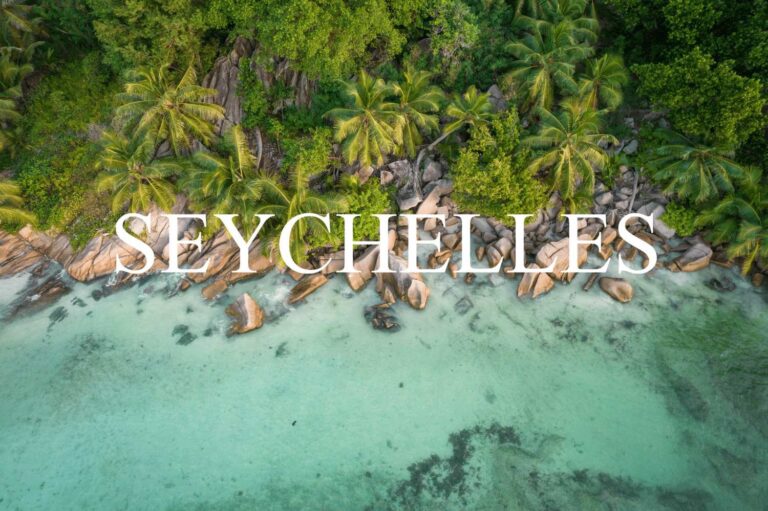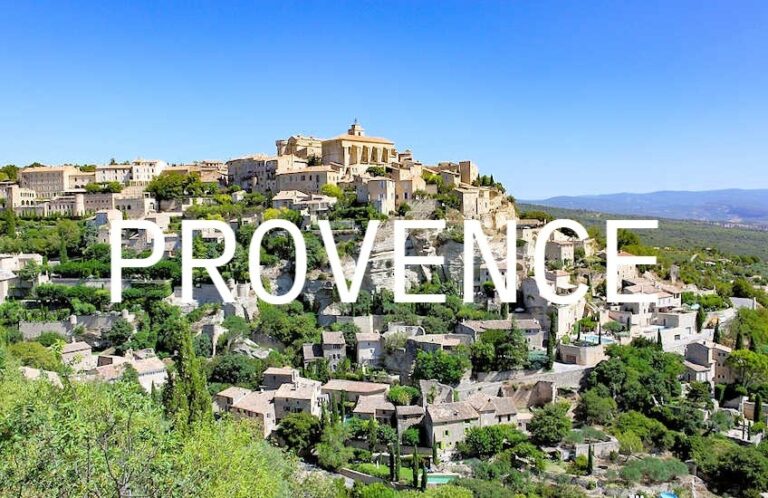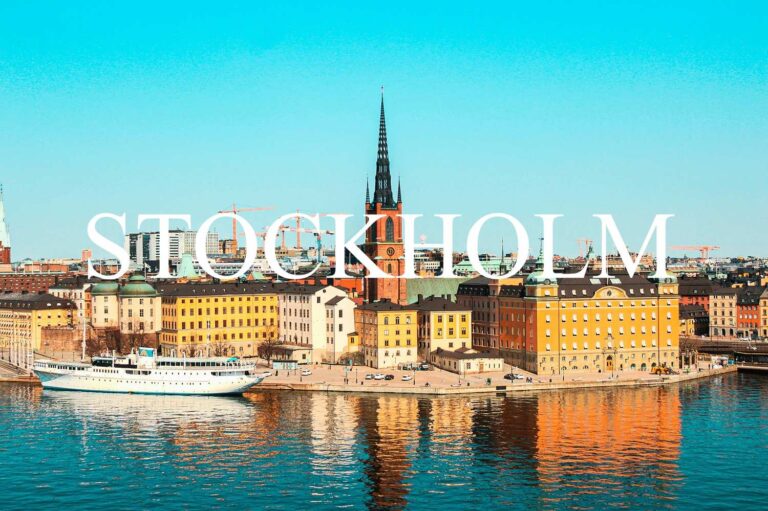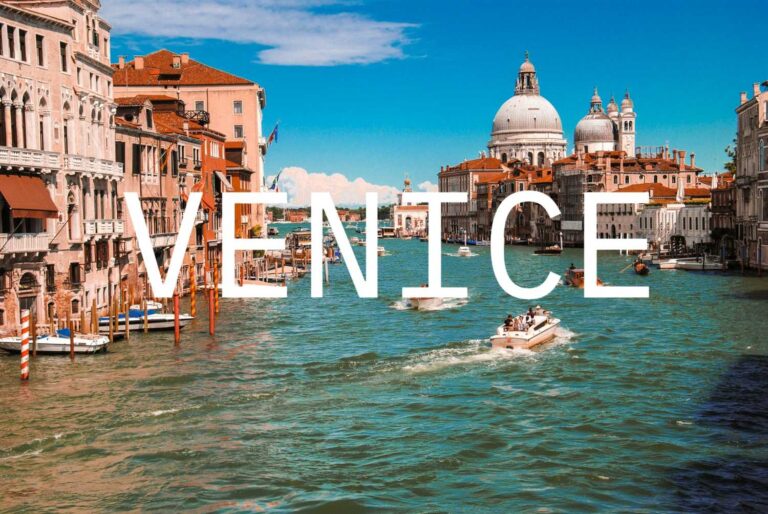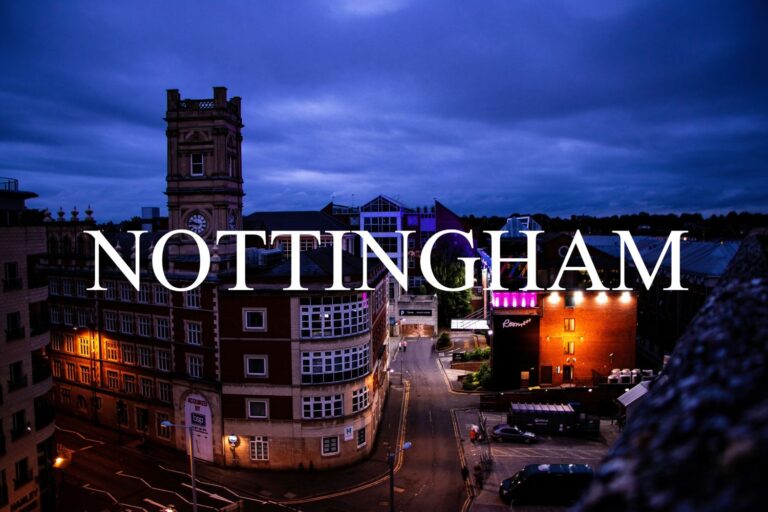
Tucked away in the heart of central France, the Loire Valley—often called the “Garden of France”—is a romantic tapestry of fairytale castles, world-class vineyards, and charming countryside landscapes. This UNESCO World Heritage region stretches along the serene Loire River and captivates visitors with its elegant architecture, rich cultural heritage, and tranquil, slow-paced way of life.
The Loire Valley is perhaps best known for its magnificent châteaux, each one a masterpiece of history and grandeur. Wander through the halls of Château de Chambord, marvel at the Renaissance beauty of Château de Chenonceau, or enjoy the intimate charm of Château d’Azay-le-Rideau. These regal estates are not only architectural wonders but also gateways to the region’s royal and noble past.
Beyond the castles, the valley blossoms with vineyards and orchards, making it one of France’s most celebrated wine regions. Sip crisp Sauvignon Blanc in Sancerre, try a rich Cabernet Franc from Chinon, or indulge in the sparkling wines of Vouvray. Many estates offer tours and tastings, inviting you to experience the authentic flavors and traditions of Loire Valley viticulture.
The region is also a paradise for food lovers. Local markets overflow with fresh produce, goat cheeses like Crottin de Chavignol, and artisanal delights that reflect the valley’s deep-rooted connection to the land. Whether you dine at a Michelin-starred restaurant or enjoy a picnic by the river, gastronomy here is always a celebration of freshness and finesse.
Picturesque towns and villages add to the valley’s allure. Explore the half-timbered houses of Amboise, the cobbled streets of Blois, or the medieval charm of Tours. Cyclists and nature lovers will appreciate the Loire à Vélo bike path, which offers scenic routes along the river through vineyards, forests, and castle-studded landscapes.
Whether you’re a history enthusiast, wine connoisseur, or romantic traveler, the Loire Valley invites you to slow down, breathe in the beauty, and immerse yourself in a world where elegance and nature live in perfect harmony.
🌟 Best Time to Visit the Loire Valley
The best time to explore the Loire Valley is from April to June and September to October.
- Spring (April to June): Experience the valley in full bloom, with vibrant gardens and mild weather perfect for sightseeing and outdoor activities.
- Fall (September to October): Enjoy the harvest season in the vineyards, cooler temperatures, and fewer tourists.
- Summer (July and August) brings warmer weather but also more crowds and higher prices, while winter is quieter but some attractions may be closed.
💶 Currency and Practical Information
- Currency: Euro (€)
- Language: French is the official language; English is commonly spoken in tourist areas.
- Transport: Renting a car is the best way to explore the region’s scattered towns and châteaux, but trains and buses also connect major spots.
- Daily Budget:
- Budget travelers: €50–€80/day
- Mid-range: €80–€150/day
- Luxury: €150+/day
🌟 Top 10 Best Places to Visit in the Loire Valley
Château de Chambord

Photo by Colin Watts on Unsplash
The Château de Chambord is one of the most iconic and grandest castles in France, renowned for its stunning French Renaissance architecture and vast, picturesque grounds. Located in the Loire Valley, this magnificent château was originally built as a royal hunting lodge for King Francis I in the early 16th century. Today, it stands as a masterpiece of art, architecture, and history, attracting visitors from around the world to explore its unique design, elaborate decorations, and sprawling estate.
🌟 Highlights of Château de Chambord
• 🏰 Architectural Marvel
Admire the castle’s distinctive French Renaissance style, featuring an elaborate roofline with numerous towers, chimneys, and a famous double-helix staircase believed to be designed by Leonardo da Vinci.
• 🌀 Double-Helix Staircase
Experience the wonder of the two intertwined staircases that allow people to ascend and descend without ever crossing paths — a remarkable engineering feat.
• 🌳 Expansive Park and Gardens
Stroll through the château’s vast 13,000-acre park, home to deer and wild boar, perfect for leisurely walks, cycling, or horse riding.
• 🎨 Interior Decoration and Rooms
Explore richly decorated rooms showcasing Renaissance art, tapestries, and period furniture, including the King’s chambers and the grand gallery.
• 🐎 Horse and Carriage Museum
Visit the on-site museum displaying elegant carriages and equestrian exhibits, celebrating the château’s history as a royal hunting retreat.
🚗 How to Get There
• By Car:
Château de Chambord is about a 2-hour drive from Paris. Ample parking is available onsite.
• By Train and Bus:
Take a train to Blois or Mer from Paris, then a short bus or taxi ride to the château.
🕒 Visitor Information
• Opening Hours:
Open daily from 9:00 AM to 5:00 PM (extended hours in summer); closed on some holidays.
• Entry Fee:
Adult tickets cost approximately €15; discounts available for children, seniors, and groups.
• Recommended Visit Duration:
Allow at least 3 hours to fully appreciate the château and its grounds.
💡 Travel Tips
• 👟 Wear Comfortable Shoes:
There’s a lot of walking, both inside the château and around the extensive park.
• 🎟️ Buy Tickets Online in Advance:
To skip queues, especially during peak tourist seasons.
• 📸 Bring a Camera:
The château’s unique architecture and grounds provide endless photo opportunities.
• 🐾 Explore the Surroundings:
Consider renting a bike or taking a guided tour to discover hidden corners of the park.
The Château de Chambord is a breathtaking symbol of French Renaissance grandeur and royal ambition. Whether you’re an architecture enthusiast, history lover, or simply seeking a magical day out in the Loire Valley, this château offers an unforgettable journey into France’s regal past.
Château de Chenonceau
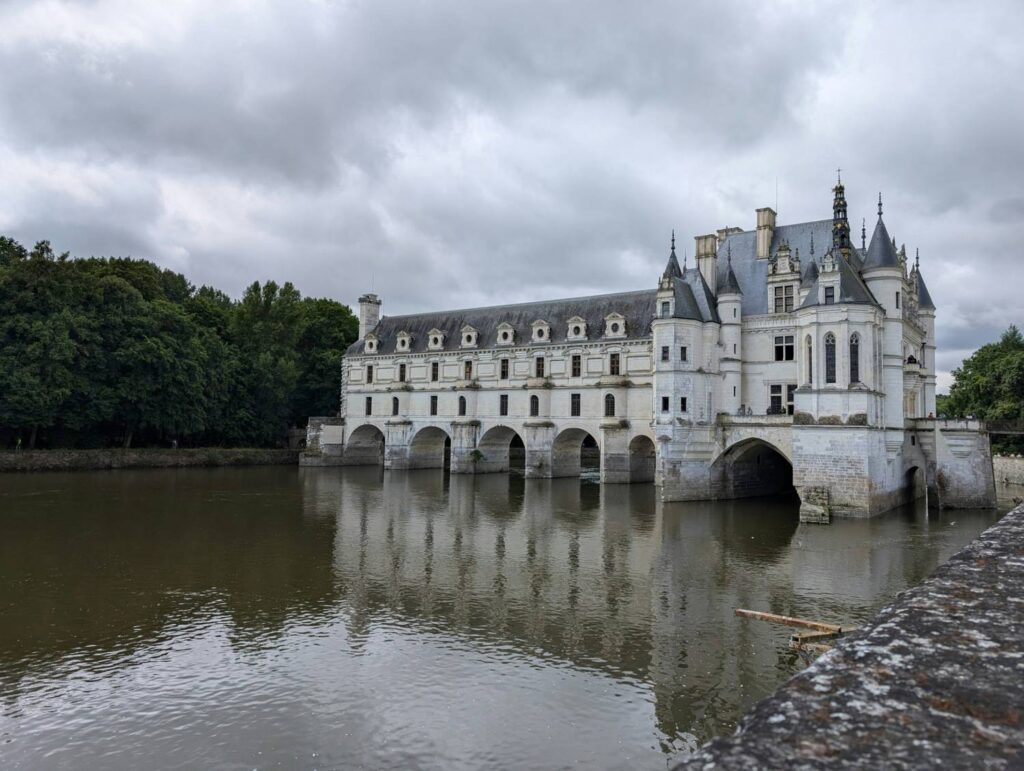
Photo by Carnet de Voyage d’Alex on Unsplash
Gracefully spanning the River Cher in central France, the Château de Chenonceau is one of the most enchanting and architecturally unique castles in the Loire Valley. Known as the “Château des Dames” (Castle of the Ladies) for the influential women who shaped its history, Chenonceau blends Renaissance elegance with stunning river views. This fairy-tale château invites visitors to explore its magnificent galleries, lush gardens, and rich stories of love, power, and artistry.
🌟 Highlights of Château de Chenonceau
• 🏰 Architectural Marvel
Admire the château’s distinctive arches that stretch across the River Cher, creating a graceful bridge and gallery that showcase Renaissance design and engineering.
• 👸 The Ladies’ Legacy
Discover the roles of notable women like Diane de Poitiers and Catherine de’ Medici, whose tastes and visions transformed the château into a symbol of feminine influence and sophistication.
• 🎨 Lavish Interiors
Wander through richly decorated rooms adorned with period furniture, tapestries, paintings by masters such as Rubens, and exquisite Renaissance details.
• 🌹 Gardens & Grounds
Stroll the meticulously manicured gardens, including Diane de Poitiers’ flower garden and Catherine de’ Medici’s formal garden, offering fragrant blooms and picturesque vistas.
• 🖼️ Art & Exhibitions
Explore temporary art exhibits and collections that complement the château’s historic ambiance, enhancing its cultural appeal.
• 🚶♂️ River Walks & Boat Rides
Enjoy scenic walks along the riverbanks or take a boat tour for a unique perspective of the château from the water.
🚗 How to Get There
• By Car:
Located about 30 minutes from Tours, the château is accessible via well-signposted routes with ample parking available.
• By Train & Shuttle:
Take a train to Tours or Blois, then use local shuttle services or taxis to reach Chenonceau.
🕒 Visitor Information
• Best Time to Visit:
Spring (April–June) and early fall (September–October) when gardens are in full bloom and crowds are lighter.
• Entry Fees:
Adult tickets typically range from €15–18; combined tickets including gardens and exhibitions may cost a bit more.
• Recommended Visit Duration:
2–3 hours to fully enjoy the château, gardens, and optional boat rides.
💡 Travel Tips
• 👟 Wear Comfortable Shoes:
The château and gardens involve walking on gravel and stone floors.
• 📸 Photography:
Photos are allowed outdoors and in certain interior spaces; flash photography is usually prohibited.
• 🎟️ Buy Tickets in Advance:
To avoid long lines, especially during peak season, pre-booking tickets online is recommended.
• 🍽️ Dining Options:
Nearby cafés and restaurants offer local cuisine—consider enjoying a meal or picnic on the grounds.
Château de Chenonceau is a dazzling jewel of the Loire Valley—a place where history, art, and nature blend seamlessly under the stewardship of remarkable women. Whether admiring its graceful river-spanning galleries, wandering fragrant gardens, or soaking up centuries of stories, visitors leave enchanted by this timeless symbol of elegance and power.
Amboise

Nestled along the banks of the Loire River, Amboise is a captivating town renowned for its rich royal heritage, stunning Renaissance architecture, and charming old streets. Once a favored residence of French kings, Amboise offers visitors a fascinating glimpse into France’s history, highlighted by its magnificent château and its close ties to Leonardo da Vinci. It’s the perfect destination for travelers seeking a blend of culture, history, and scenic beauty in the heart of the Loire Valley.
🌟 Highlights of Amboise
• 🏰 Château Royal d’Amboise
Explore the grand Royal Château, a former royal residence that showcases exquisite Renaissance design, beautifully landscaped gardens, and panoramic views of the Loire River. The château is famous for its connection to King François I and for housing the tomb of Leonardo da Vinci’s close companion, Charles VIII.
• 🖼️ Clos Lucé – Leonardo da Vinci’s Final Home
Visit the nearby Château du Clos Lucé, where Leonardo da Vinci spent his last years. The château features interactive exhibits of his inventions, models, and a peaceful park, offering insight into the genius of the Renaissance master.
• 🌿 Scenic Loire River Walks
Stroll along the riverbanks and enjoy the picturesque views, quaint cafes, and local markets that give Amboise its charming ambiance.
• 🏛️ Historic Old Town
Wander through the narrow streets lined with timber-framed houses, artisan shops, and delightful restaurants serving traditional French cuisine.
• 🛍️ Local Markets and Festivals
Experience vibrant markets selling regional produce, crafts, and wines, especially lively during the summer months.
🚗 How to Get There
• By Train:
Amboise is well-connected by train from Paris (about 1.5 hours) and other major cities, making it an easy day trip or overnight stay.
• By Car:
Located about 220 km southwest of Paris, accessible via the A10 highway with ample parking available in town.
🕒 Visitor Information
• Opening Hours:
Châteaux and museums typically open from 9:30 AM to 6:00 PM, with seasonal variations.
• Entry Fees:
Admission to the Château d’Amboise and Clos Lucé is around €12-€15; discounts for children and seniors are available.
• Recommended Visit Duration:
Plan at least half a day to explore the main sites, with a full day ideal for a more relaxed experience.
💡 Travel Tips
• 👟 Comfortable Footwear:
The cobblestone streets and château grounds require good walking shoes.
• 🎟️ Book Tickets in Advance:
Especially during peak tourist season to avoid queues.
• 📸 Best Photography Spots:
Capture stunning views from the château terraces overlooking the Loire River.
• 🍽️ Try Local Cuisine:
Don’t miss regional specialties like goat cheese, Loire Valley wines, and fresh pastries.
Amboise offers a perfect blend of history, culture, and natural beauty, making it a highlight of the Loire Valley. Whether exploring royal palaces, following in Leonardo da Vinci’s footsteps, or simply soaking up the riverside charm, Amboise invites you to experience the elegance and romance of Renaissance France.
Château de Villandry

Photo by AXP Photography on Unsplash
Nestled in the heart of the Loire Valley, the Château de Villandry is famed not just for its grand Renaissance architecture but, more importantly, for its spectacular and meticulously designed gardens. Often considered one of the most beautiful gardens in France, Villandry offers visitors a harmonious blend of art, nature, and history. It’s a place where lush greenery, vibrant flowers, and geometric patterns create a living canvas that changes with the seasons.
🌟 Highlights of Château de Villandry
• 🏰 Elegant Renaissance Architecture
Explore the château’s stately façade, restored in the early 20th century, which perfectly complements the grandeur of its surrounding gardens.
• 🌿 World-Renowned Gardens
Wander through the château’s four major gardens: the Ornamental Garden, Water Garden, Herb Garden, and the famous Kitchen Garden — each boasting intricate designs, colorful plantings, and symbolic motifs.
• 🌸 Seasonal Beauty
Experience the gardens’ ever-changing display through spring blooms, summer vibrancy, autumnal hues, and winter silhouettes.
• 🎨 Symbolism & Design
Discover the meaning behind the garden layouts, such as the “Garden of Love,” featuring heart-shaped flower beds, and the “Sun Garden,” symbolizing joy and harmony.
• 🖼️ Interior Décor
Inside the château, admire period furnishings, tapestries, and decorative arts that echo the Renaissance era’s elegance.
• 🚶♂️ Scenic Walks & Views
Climb to the château’s terraces for panoramic views of the gardens and surrounding Loire countryside.
🚗 How to Get There
• By Car:
Located near Tours and Tours-Saint-Pierre, Villandry is accessible via major roads with free parking available on site.
• By Public Transport:
Regional buses connect Villandry with Tours and other nearby towns; some tourists also take bike tours through the Loire Valley.
🕒 Visitor Information
• Best Time to Visit:
Late spring through early autumn (May–September) is ideal for garden viewing.
• Entry Fees:
Admission usually costs around €12–14 for adults, including access to gardens and château interiors.
• Recommended Visit Duration:
2–3 hours to explore the gardens thoroughly and tour the château.
💡 Travel Tips
• 👟 Wear Comfortable Shoes:
Gardens involve walking on gravel paths and some uneven terrain.
• 📸 Photography:
Photos are welcome outdoors; check for any restrictions inside the château.
• 🕊️ Respect the Gardens:
Stay on marked paths to help preserve the delicate plantings and design.
• 🍽️ On-site Café:
Enjoy refreshments at the château’s café or nearby eateries to relax after your visit.
Château de Villandry is a breathtaking testament to the artistry of Renaissance garden design, where every hedge, flowerbed, and pathway is crafted with intention and beauty. It offers a peaceful, inspiring escape into nature and history—perfect for garden lovers and cultural explorers alike.
Saumur
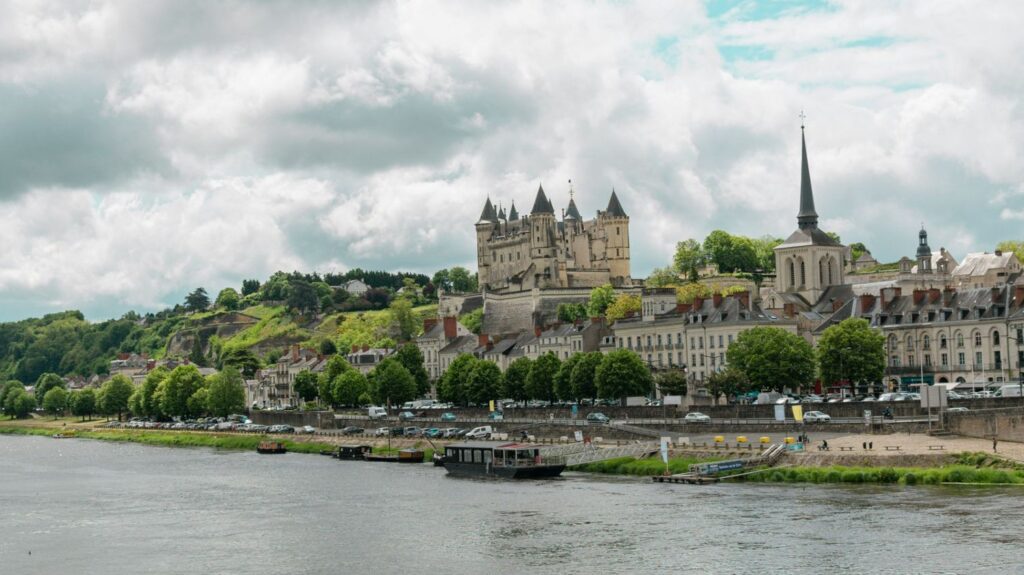
Photo by Andréa Villiers on Unsplash
Situated on the banks of the Loire River, Saumur is a picturesque town famous for its impressive château, vibrant wine culture, and deep equestrian roots. Known as the “Gateway to the Loire Valley,” Saumur beautifully combines medieval charm with lively cultural experiences, making it a must-visit destination for travelers exploring this renowned region of France.
🌟 Highlights of Saumur
• 🏰 Château de Saumur
Perched on a hill overlooking the Loire River, the Château de Saumur is a striking fortress dating back to the 10th century. Today, it houses museums including the Museum of Decorative Arts and the Museum of the Horse, showcasing Saumur’s rich history and equestrian heritage.
• 🐴 Cadre Noir – The National Riding School
Discover the world-famous Cadre Noir, France’s prestigious equestrian school known for its classical dressage performances. Visitors can watch stunning horse shows and learn about this unique tradition.
• 🍷 Wine Tasting and Vineyards
Saumur is renowned for its sparkling wines and reds made from Cabernet Franc. Numerous local vineyards and wine cellars offer tastings and tours, providing a delicious way to experience the region.
• 🛶 Loire River Activities
Enjoy leisurely boat trips, kayaking, or cycling along the scenic Loire River trails that wind through the countryside.
• 🏛️ Historic Old Town
Explore Saumur’s charming streets lined with timber-framed houses, quaint cafés, and artisan shops that reflect the town’s medieval past.
🚗 How to Get There
• By Train:
Saumur is accessible by direct train from Paris (about 2 hours) and nearby cities like Tours and Angers.
• By Car:
Located approximately 250 km southwest of Paris, reachable via the A85 highway with parking available in town.
🕒 Visitor Information
• Opening Hours:
Château and museums generally open daily from 9:30 AM to 6:00 PM; times may vary seasonally.
• Entry Fees:
Admission to Château de Saumur and museums costs around €10-€15; discounts apply for children and seniors.
• Recommended Visit Duration:
Plan at least half a day to explore key attractions; a full day is ideal for wine tours and shows.
💡 Travel Tips
• 👟 Wear Comfortable Shoes:
For walking around the château, old town, and vineyards.
• 🎟️ Book Cadre Noir Shows in Advance:
Equestrian performances are popular and tickets can sell out.
• 🍇 Try Local Wines:
Don’t miss tasting Saumur’s sparkling and red wines directly from producers.
• 📸 Capture the Views:
The château hilltop offers beautiful panoramic views of the Loire River and town.
Saumur enchants visitors with its medieval charm, equestrian excellence, and delightful wine culture. Whether wandering historic streets, marveling at horse shows, or savoring local vintages, Saumur is a quintessential Loire Valley experience that beautifully blends history and tradition.
Chinon
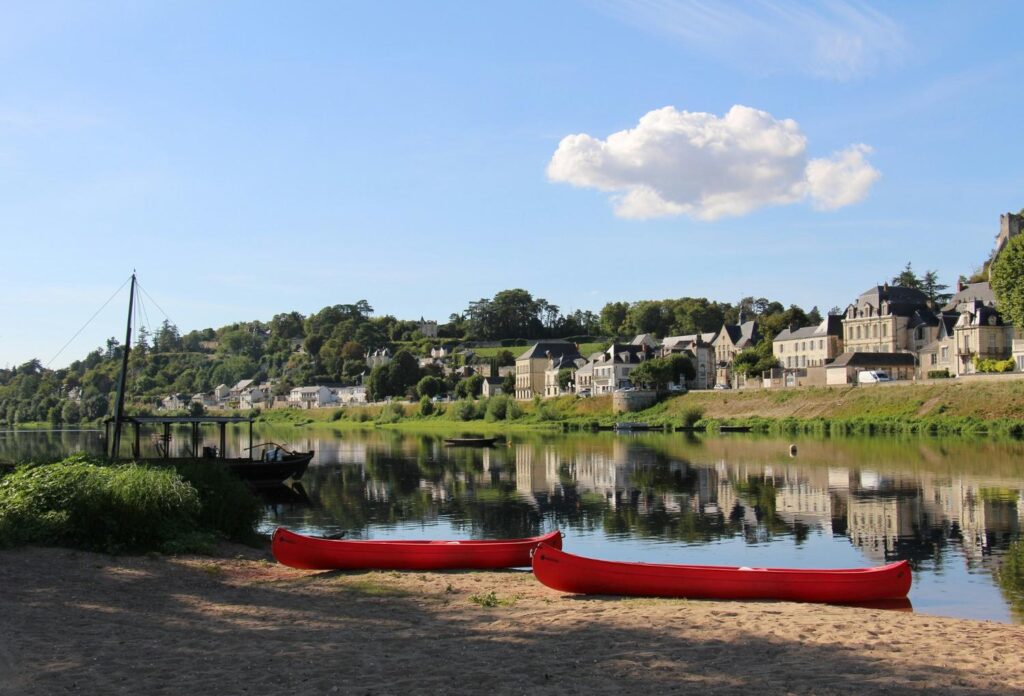
Situated on the banks of the Vienne River in the Loire Valley, Chinon is a picturesque town known for its rich history, medieval architecture, and world-famous vineyards. Steeped in tales of kings, knights, and Joan of Arc, Chinon offers visitors a captivating blend of cultural heritage and natural beauty. Whether wandering cobblestone streets, exploring its formidable fortress, or tasting robust local wines, Chinon invites you to experience the timeless allure of the French countryside.
🌟 Highlights of Chinon
• 🏰 Château de Chinon
Explore the imposing medieval fortress that once served as a royal residence and strategic stronghold. Walk along ramparts offering panoramic views of the town and river, and visit the dungeon where Joan of Arc met Charles VII.
• ⛪ Collegiate Church of Saint-Mexme
Visit this Romanesque church perched on a hill overlooking Chinon, known for its serene atmosphere, beautiful frescoes, and peaceful gardens.
• 🍷 Wine Tasting & Vineyards
Discover Chinon’s renowned red wines made from Cabernet Franc grapes. Many local wineries offer tastings and tours, showcasing the region’s deep winemaking traditions.
• 🏘️ Historic Old Town
Stroll through narrow medieval streets lined with timber-framed houses, artisan shops, and quaint cafés. The lively market days add local flavor to the experience.
• 🖼️ Museums & Cultural Sites
Learn about Chinon’s history and heritage at museums like the Musée Rabelais, dedicated to the famous French writer François Rabelais who was born nearby
🚗 How to Get There
• By Train:
Regular trains connect Chinon with Tours and other Loire Valley cities, making it accessible for day trips.
• By Car:
Chinon is reachable via the A85 motorway, with parking available near the town center and fortress.
🕒 Visitor Information
• Best Time to Visit:
Late spring to early autumn (May–September) offers pleasant weather for sightseeing and vineyard visits.
• Entry Fees:
Château de Chinon charges a modest admission fee (~€8); other sites vary, with many outdoor areas free to explore.
• Recommended Visit Duration:
1–2 days to enjoy the fortress, town, and wine tours at a relaxed pace.
💡 Travel Tips
• 👟 Wear Comfortable Shoes:
The town’s cobblestone streets and fortress walkways require sturdy footwear.
• 🍇 Plan a Wine Tour:
Booking a guided wine tasting or vineyard visit enhances the local experience.
• 📸 Capture Scenic Views:
Don’t miss photos from the castle ramparts overlooking the Vienne River and rooftops.
• 🍽️ Try Local Cuisine:
Pair Chinon’s wines with regional dishes like goat cheese, rillettes, and fresh river fish at local bistros.
Chinon is a delightful blend of history, culture, and viticulture set against the idyllic backdrop of the Loire Valley. Its medieval charm, royal connections, and celebrated wines make it a perfect destination for travelers seeking an authentic French experience rich in stories and flavors.
Tours
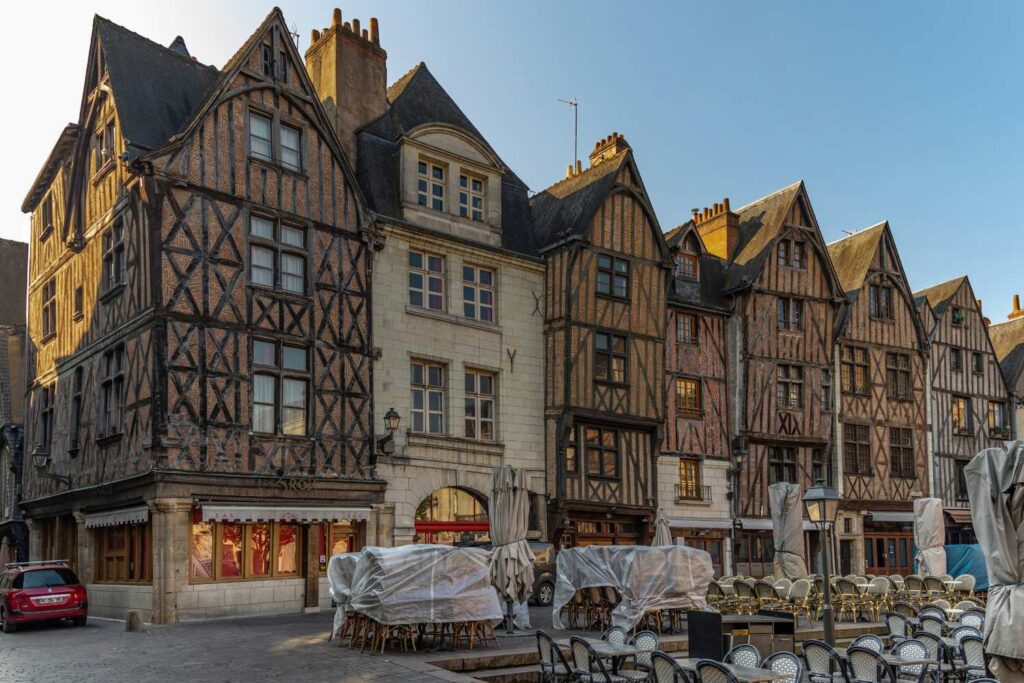
Photo by Jordi Vich Navarro on Unsplash
Located on the banks of the Loire River, Tours is a dynamic city that perfectly blends medieval charm, Renaissance architecture, and modern vibrancy. Known as the cultural and economic hub of the Loire Valley, Tours offers visitors an authentic French experience with its lively markets, historic sites, and delicious cuisine. Whether you’re exploring its old town or using it as a base to discover the surrounding châteaux, Tours is a must-visit destination in central France.
🌟 Highlights of Tours
• 🏛️ Old Town (Vieux Tours)
Stroll through cobblestone streets lined with half-timbered houses, quaint cafes, and bustling squares like Place Plumereau, a favorite gathering spot filled with lively terraces and a friendly atmosphere.
• ⛪ Saint-Gatien Cathedral
Visit this stunning Gothic cathedral known for its impressive stained glass windows and intricate façade, a masterpiece reflecting centuries of history and craftsmanship.
• 🎨 Musée des Beaux-Arts
Discover an extensive collection of European art, including works by masters like Rembrandt, Rubens, and Delacroix, housed in a beautiful Renaissance-era building.
• 🍷 Gastronomy and Markets
Enjoy local specialties such as rillettes and goat cheese, and explore vibrant markets offering fresh produce, regional wines, and artisan products.
• 🚲 Gateway to the Loire Valley Châteaux
Tours is an ideal starting point for day trips to nearby castles such as Château de Villandry, Château de Chenonceau, and Château d’Amboise.
🚗 How to Get There
• By Train:
Tours is well connected by high-speed TGV trains from Paris (just over 1 hour) and other major cities in France.
• By Car:
Located about 230 km southwest of Paris, accessible via the A10 motorway, with ample parking options in the city.
🕒 Visitor Information
• Opening Hours:
Museums and attractions typically open from 10:00 AM to 6:00 PM; shops and restaurants have varied hours.
• Entry Fees:
Most churches and public spaces are free; museums charge around €7-€10 for admission.
• Recommended Visit Duration:
Spend at least one full day exploring Tours, with more time for side trips into the Loire Valley.
💡 Travel Tips
• 👟 Comfortable Walking Shoes:
The historic center’s cobblestone streets require sturdy footwear.
• 🎟️ Plan Château Visits in Advance:
Book tickets online for popular nearby castles to avoid queues.
• 🍽️ Try Local Cuisine:
Sample regional dishes at traditional bistros and enjoy Loire Valley wines.
• 📸 Best Photo Spots:
Capture the lively ambiance of Place Plumereau and panoramic views along the Loire River.
Tours is a vibrant city that perfectly combines historic charm, cultural richness, and modern-day liveliness. It serves as an excellent gateway to explore the Loire Valley’s treasures while offering plenty to discover within its own streets and squares.
Château d’Azay-le-Rideau
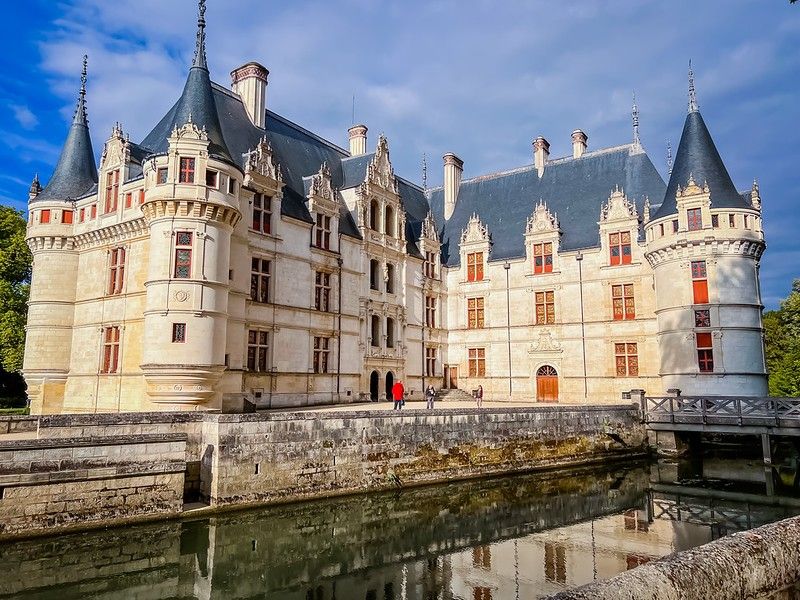
Set gracefully on an island in the Indre River, the Château d’Azay-le-Rideau is a stunning example of early French Renaissance architecture. Built during the reign of King Francis I, this fairy-tale castle combines elegant Italianate design with picturesque surroundings, making it one of the Loire Valley’s most beloved and photographed châteaux. Visitors are enchanted by its harmonious reflection in the water and its beautifully preserved interiors.
🌟 Highlights of Château d’Azay-le-Rideau
• 🏰 Architectural Elegance
Marvel at the château’s symmetrical façades, ornate turrets, and delicately sculpted stonework that showcase the Renaissance style’s refinement.
• 🌊 Scenic Water Setting
Enjoy the castle’s unique location on a river island, where its reflections create a magical mirror effect, especially on calm days.
• 🎨 Lavish Interiors
Explore richly decorated rooms featuring period furniture, tapestries, painted ceilings, and antique art that evoke 16th-century noble life.
• 🌳 Formal Gardens & Parkland
Stroll through the landscaped gardens and park surrounding the château, perfect for leisurely walks amid mature trees and seasonal blooms.
• 🖼️ Art & Exhibitions
Discover temporary exhibitions that highlight the château’s history, Renaissance art, and cultural heritage.
🚗 How to Get There
• By Car:
Located about 20 minutes from Tours, Azay-le-Rideau is accessible by road with parking facilities near the château.
• By Train:
Regional trains run from Tours to Azay-le-Rideau station, followed by a short walk to the château.
🕒 Visitor Information
• Best Time to Visit:
Spring through early autumn (April–October) when gardens and parklands are at their best.
• Recommended Visit Duration:
1.5 to 2 hours to fully appreciate the castle, interiors, and grounds.
💡 Travel Tips
• 👟 Wear Comfortable Shoes:
Paths in the gardens and château floors can be uneven.
• 📸 Photography:
Photos are allowed in the gardens and some interior spaces; flash is usually prohibited inside.
• 🎟️ Book Tickets in Advance:
Especially during peak season, pre-booking helps avoid long waits.
• 🍽️ Nearby Dining:
Local cafés and restaurants in Azay-le-Rideau village offer charming spots for meals or refreshments.
Château d’Azay-le-Rideau is a captivating Renaissance masterpiece, blending architectural beauty with idyllic natural surroundings. Its enchanting waterside setting and rich history make it a must-see highlight of the Loire Valley, perfect for lovers of art, history, and serene landscapes.
Blois

Photo by Dorian Mongel on Unsplash
Situated on the banks of the Loire River, Blois is a charming town renowned for its rich history, stunning Renaissance and Gothic architecture, and vibrant cultural scene. As a former royal residence, Blois offers visitors a fascinating journey through French history, with its magnificent château, medieval streets, and lively festivals. It’s a perfect stop for travelers exploring the Loire Valley’s heritage and beauty.
🌟 Highlights of Blois
• 🏰 Château de Blois
Explore the impressive Château de Blois, known for its unique blend of Gothic, Renaissance, and Classical architectural styles. The château was home to several French kings and queens and features beautifully decorated rooms, grand staircases, and informative museums.
• 🏛️ Maison de la Magie (House of Magic)
Delight in this unique museum dedicated to magic and illusions, located near the château. It’s a fun and interactive attraction suitable for all ages, celebrating the legacy of magician Jean Eugène Robert-Houdin.
• 🌿 Historic Old Town
Wander through Blois’s charming old town with its narrow streets, timber-framed houses, boutiques, and cozy cafés, offering a quintessential French small-town experience.
• ⛪ Saint-Nicolas Church
Visit this beautiful Gothic church, known for its striking stained glass windows and serene interior.
• 🎭 Festivals and Events
Blois hosts several cultural events, including the annual Renaissance Festival and the Blois Jazz Festival, attracting visitors with music, theater, and historical reenactments.
🚗 How to Get There
• By Train:
Blois is accessible by train from Paris (about 1.5 hours) and other Loire Valley cities.
• By Car:
Located roughly 180 km southwest of Paris, Blois is easily reached via the A10 motorway, with parking options in the town center.
🕒 Visitor Information
• Opening Hours:
Château and museums typically open from 9:30 AM to 6:00 PM; seasonal variations may apply.
• Recommended Visit Duration:
Allow 2 to 3 hours to explore the château and old town comfortably.
💡 Travel Tips
• 👟 Wear Comfortable Shoes:
Cobblestone streets and château grounds require sturdy walking shoes.
• 🎟️ Book Tickets in Advance:
Especially for the château during peak seasons.
• 📸 Photo Opportunities:
Don’t miss panoramic views from the château terraces overlooking the Loire River.
• 🍽️ Try Local Cuisine:
Enjoy regional dishes at nearby restaurants, featuring Loire Valley specialties.
Blois offers a perfect mix of royal history, architectural beauty, and lively culture in the heart of the Loire Valley. Whether exploring grand palaces, magical museums, or charming streets, Blois promises an enriching and memorable experience.
Château de Langeais

Perched on a rocky outcrop overlooking the Loire River, the Château de Langeais is a remarkable example of medieval military architecture blended with Renaissance charm. Known for its well-preserved keep and richly furnished interiors, Langeais offers visitors a rare glimpse into the turbulent history of medieval France, from feudal battles to royal weddings. Its imposing towers and intimate chambers evoke the spirit of knights, nobility, and legends that shaped the region.
🌟 Highlights of Château de Langeais
• 🏰 Medieval Fortress Architecture
Explore the massive stone keep, drawbridge, and defensive walls dating back to the 10th century, offering insight into medieval warfare and castle life.
• 👑 Royal Wedding Chamber
Visit the room where the historic marriage of King Charles VIII and Anne of Brittany took place in 1491, a pivotal moment uniting two powerful French territories.
• 🖼️ Period Furnishings & Tapestries
Wander through rooms filled with authentic medieval and Renaissance furniture, richly detailed tapestries, armor, and weapons.
• 🛡️ Historical Exhibitions
Learn about the castle’s strategic role during the Hundred Years’ War and its evolution through centuries of conflict and peace.
• 🌳 Castle Gardens
Stroll the gardens and grounds surrounding the château, featuring peaceful walks with views of the Loire Valley.
🚗 How to Get There
• By Car:
Located near Tours and Chinon, Langeais is accessible via local roads with on-site parking.
• By Train:
Regional trains stop at Langeais station, a short walk from the château.
🕒 Visitor Information
• Best Time to Visit:
Spring through early autumn (April–October) for pleasant weather and open gardens.
• Entry Fees:
Admission is approximately €10 for adults, with discounts for children and groups.
• Recommended Visit Duration:
1.5 to 2 hours to explore the fortress, exhibitions, and gardens.
💡 Travel Tips
• 👟 Wear Sturdy Shoes:
Stone floors and outdoor paths can be uneven and slippery.
• 📸 Photography:
Photos are allowed outdoors and in most interior rooms; flash photography is typically prohibited.
• 🛎️ Guided Tours Available:
Consider joining a guided tour for in-depth historical context and fascinating stories.
• 🍽️ Nearby Amenities:
Langeais village offers charming cafés and restaurants for refreshments after your visit.
Château de Langeais is a captivating journey back to medieval France, where stone walls tell tales of royalty, warfare, and alliance. Its blend of fortress strength and refined interiors makes it a fascinating destination for history buffs and anyone eager to step into the past amidst the scenic Loire Valley.
💡 Travel Tips for the Loire Valley
- Rent a car to fully enjoy the flexibility of exploring the scattered châteaux and countryside.
- Buy combined tickets or tourist passes for château visits to save money and skip lines.
- Try local specialties like goat cheese, rillettes, and wines from the region’s many vineyards.
- Wear comfortable shoes as you’ll do plenty of walking on cobbled streets and garden paths.
- Visit markets and local festivals to experience the region’s vibrant culture and seasonal delights.
🌟 Final Thoughts
The Loire Valley is a treasure trove of history, beauty, and culture. From majestic castles and stunning gardens to charming towns and delicious wines, every corner invites discovery and wonder. Whether it’s a leisurely road trip or a romantic getaway, the Loire Valley promises memories to cherish forever.
Ready to explore the Garden of France? Your unforgettable Loire Valley adventure awaits!

I’m Shreyash Mhashilkar, an IT professional who loves building user-friendly, scalable digital solutions. Outside of coding, I enjoy researching new places, learning about different cultures, and exploring how technology shapes the way we live and travel. I share my experiences and discoveries to help others explore new places, cultures, and ideas with curiosity and enthusiasm.

